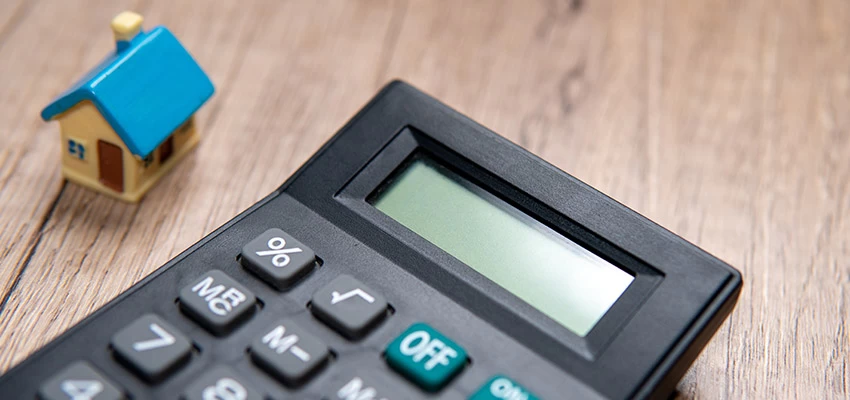In recent times, the most preferred mechanism adopted by the land owners to transfer their immovable property has been under a Joint Development Agreement (‘JDA’). This mode is usually preferred by those land owners who want to develop their lands but do not have the requisite expertise to carry out the same. Therefore, they enter into a JDA with a developer for developing and marketing the land parcel to the buyers for a mutual benefit.
JDAs are entered into either under the Revenue Sharing Model or the Area Sharing Model. Out of the two methods, the Area Sharing Model is more preferred by the land owners wherein the developer will be given a share in the land and consequently, the land owner will get a share in the built-up area.
There have been disputes between the assessee and the Department with respect to determining the year of taxability of capital gains arising out of the transfer of immovable property under JDAs. Disputes relating to when a transfer will take place in case of a JDA were given a quietus in specific cases by introduction of Section 45(5A) in the Income Tax Act, 1961 (‘IT Act’) with effect from 1 April 2018. However, the disputes have continued for transactions entered previously or not covered by Section 45(5A).
This article attempts to analyze the said aspect in light of the provisions of the IT Act and jurisprudence laid down by various Courts in case of registered JDAs.
Analysis of the relevant provisions under the IT Act / Scope of Section 2(47)(v)
Section 45 of the IT Act provides that any profits or gains arising from the transfer of a capital asset effected in the previous year shall be chargeable to income-tax under the head ‘capital gains’ and shall be deemed to be the income of the previous year in which the transfer took place.
The fundamental features which determine the taxability of capital gain are that the gain ought to be from the transfer of a capital asset. The said provision has a large scope of operation due to the presence of the deeming fiction which states that the gain shall be the deemed income of that previous year in which the transfer took place. In other words, the profits may actually be received in any other year, but for the purposes of Section 45, the gain shall be the deemed income of the year of transfer of the capital asset. In the context of JDA transactions, it is important to analyse the point in time in which the transfer can be said to have taken place for the purposes of Section 45.
Section 2(47)(v) of the IT Act provides that ‘transfer’ in relation to a capital asset, includes any transaction involving the allowing of the possession of any immovable property to be taken or retained in part performance of a contract of the nature referred to in Section 53A of the Transfer of Property Act, 1882 (‘TOPA’). In order to attract Section 2(47)(v), it is essential that the conditions stipulated under Section 53A of the TOPA are satisfied.
The Bombay High Court in Chaturbhuj Dwarkadas Kapadia of Bombay v. CIT[1] observed that in order to attract Section 53A of TOPA, the following conditions need to be fulfilled:
- There should be a contract for consideration;
- It should be in writing;
- It should be signed by the transferor;
- It should pertain to transfer of immovable property;
- The transferee should have taken possession of the property;
- The transferee should be ready and willing to perform his part of the contract.
Date of execution of the JDA must be taken as the date of transfer
The Hon’ble Bombay High Court in Chaturbhuj Dwarakadas Kapadia of Bombay (supra) dealt with an issue as to whether the transfer of an immovable property took place on the date of execution of the JDA or in the year in which substantial compliances were carried by the developer as per the JDA. In the present case, the assessee entered into a JDA with a developer on 18 August 1994 and executed a limited power of attorney in favour of the developer on the same day. The developer had made substantial payments and obtained two permissions for the construction in AY 1996-97. Subsequently, the assessee executed an irrevocable license in favour of the developer on 12 March 1999 to enter the property. The assessee contented before the lower authorities that the transfer took place only when he executed the irrevocable licence in favour of the developer to enter upon the property and, therefore, liability to pay capital gain only arose during the AY 1999-2000. However, the Tribunal held that since substantial payments and permissions were obtained in AY 1996-97, the capital gains is taxable in AY 1996-97. The High Court observed that in the instant case, the agreement was a Development Agreement and the test to be applied to decide the year of chargeability was the year in which the transaction had been entered into. This view was taken for the reason that the Development Agreement does not transfer the interest in the property to the developer in general law and, therefore, by application of Section 2(47)(v), even entering into such a contract could amount to transfer from the date of the agreement itself. The Court further observed that substantial compliance would differ from officer to officer and therefore, it cannot be taken as reason to decide the year of taxability. The Court held that once under the agreement a limited power of attorney was intended to be given to the developer to deal with the property, the date of the contract/JDA viz., 18 August 1994 would be the relevant date to decide the date of transfer under Section 2(47)(v) and, in which event, the question of substantial performance of the contract thereafter did not arise.
The Bangalore ITAT in a recent decision of Jaico Automobile Engineering Company Pvt. Ltd. v. ITO[2] also dealt with a similar issue. The assessee had executed a JDA, General Power of Attorney (‘GPA’) and sale agreement with a developer on 30 March 2007. All the three documents were registered. As per the JDA, it was agreed between the parties that possession would be given to the developer in pursuance of the agreement on or before 30 November 2007. The reason for fixing the date was on the basis of payment of refundable deposit of INR 35 crores. The developer had paid INR 15 crores while the agreement was executed, and the balance was required to be paid on or before 30 November 2007. The question before the ITAT was to decide whether there was a valid transfer of property on the date of executing the JDA. The assessee contended that since it was specifically agreed between the parties that possession would be handed over only on 30 November 2007 or earlier if the balance of the refundable deposit was made, there was no transfer of possession contemplated on or before 30 March 2007. The assessee further contended that the developer had not carried out any construction activity during the said period and therefore, there was no performance of the contract by way of development of the property during the relevant year. Therefore, the assessee took a stand that there was no transfer of property to the developer in AY 2007-08 as the conditions stipulated under Section 53A of TOPA were not satisfied. On the other hand, the Department contended that by virtue of the JDA, the assessee granted the developer the right of development of the site and that such right was irrevocable. Since, the assessee had also executed an irrevocable GPA in favour of the developer to develop, alienate, sale, convey and lease the constructed area, there was a valid transfer as per Section 2(47)(v) of the IT Act in AY 2007-08. The ITAT observed that from a perusal of the contents of the JDA and GPA dated 30 March 2007, it can be inferred that the assessee had provided to the developer all facilities to entry, development and even sale of the constructed built-up area. Therefore, such unhindered access provided to the developer is very much in the nature of possession even if the word as such has not been mentioned in the JDA. The ITAT further observed that the GPA also gives irrevocable powers of not only possession but, even to alienate and sell the constructed area. Therefore, the ITAT held that the transactions entered by way of JDA dated 30 March 2007 would constitute a ‘transfer’ in terms of Section 2(47) of the IT Act r.w. Section 53A of TOPA and therefore, the capital gains arising out of the said transfer is taxable in AY 2007-08.
The Chennai ITAT in Tamilnadu Brick Industries v. ITO[3] dealt with an issue as to whether a registered GPA along with a JDA conferring entitlement to the developer to sell, convey or deal with the property amount to transfer of property as per Section 2(47)(v) of the IT Act. The assessee in the present case had executed a JDA along with a GPA in favour of the developer on 17 September 2012. The assessee had contended that it had only permitted the developer to enter and exit the property for the purpose of development and therefore, the same shall not be construed as deliver of possession or part performance contemplated under Section 53A of TOPA. The ITAT observed that execution of a GPA in favour of the developer confers the entire possession of the property to the developer and thereby attracts Section 53A of TOPA and therefore, the date of execution of JDA along with GPA must be considered for purposes of Section 2(47)(v) of the IT Act.
Date of execution of the JDA cannot be taken as the date of transfer
The Hyderabad ITAT in S. Ranjith Reddy v. DCIT[4] dealt with an issue as to whether mere execution of a JDA without commencement of construction be held as transfer as per Section 2(47)(v) of the IT Act. The Assessee had entered into a JDA with a developer on 28 February 2006. During the relevant year, the developer had not started the construction of the project. The ITAT observed that usually in cases where an assessee enters into a contract which is a development agreement, in the garb of agreement of sale, it is the date of the development agreement which is material to decide the date of transfer. However, it was further observed that by no stretch of logic, this legal precedent can support the proposition that all development agreements, in all situations, satisfy the conditions of Section 53A which is a sine qua non for invoking Section 2(47)(v). The ITAT observed that a plain reading of the Section 53A shows that for a contract to fall under the ambit of Section 53A, it is necessary that transferee should have or is willing to perform his part of the contract. Therefore, it is clear that willingness to perform for the purposes of Section 53A is something more than a statement of intent and it is the unqualified and unconditional willingness on the part of the vendee to perform its obligations. Thus, unless the party has performed or is willing to perform its obligations under the contract, and in the same sequence in which these are to be performed, it cannot be said that the provisions of Section 53A will come into play on the facts of that case. It was observed that it is only elementary that, unless provisions of Section 53A of TOPA are satisfied on the facts of a case, the transaction in question cannot fall within the scope of deemed transfer under section 2(47)(v). In light of the abovementioned observations, it was held that once it is concluded that the developer did not perform the stipulations as required by the JDA during the period under consideration and within the meaning assigned to the expression in Section 53A, it cannot be said that there was a transfer under section 2(47)(v) so as to levy capital gain tax on the date of execution of the JDA.
The Hyderabad ITAT in Binjusaria Properties (P.) Ltd. v. ACIT[5] also deals with a similar issue. The assessee had entered into a JDA-cum-GPA in AY 2006-07 with a developer. The developer had to develop the property according to the approved plan from the competent authority and deliver the assessee 38% of the constructed area in the residential part. During the relevant year, the process of construction had not been initiated and no approval for the construction of the building was obtained by the developer. The lower authorities opined that that the transfer had taken place during the relevant year, in terms of the development agreement-cum-GPA and therefore, the assessee was liable to pay capital gain tax on the date of executing the JDA. The ITAT observed that while the assessee had fulfilled its part of the obligation under the JDA, the developer had not done anything to discharge the obligations cast on it and therefore, the capital gains could not be brought to tax in AY 2006-07, merely on the basis of signing of the JDA during relevant year.
In Rameysh Ramdas v. ITO[6], the assessee had on 13 November 2011 entered into a JDA with a developer to demolish and construct residential apartments. As per the JDA, the assessee was to receive some monetary consideration along with 50% of the built-up area. Subsequently, the assessee executed a POA on 17 August 2012 granting the developer the authority to convey, sell, transfer the property. It was contended by the assessee that the transfer took place only in AY 2013-14, subsequent to executing the POA dated 17 August 2012. However, the Assessing Officer held that capital gains were liable to be taxed in AY 2012-13 since there was a transfer under Section 2(47)(v) as on the date of executing the JDA. The ITAT observed that as per the JDA, the possession had not been handed over to the developer as the assessee had only granted a right to enter into the premises for the purposes of demolition and re-construction. Additionally, it was observed that the POA granted in favour of the developer specifically barred the developer from selling or executing any deed for any portion of the property. Thus, it was observed that neither the JDA nor the POA complied with the conditions specified in Section 53A of TOPA. The ITAT held that the transfer in the present case took place only after execution of the POA dated 17 August 2012 in favour of the developer granting the authority to convey, sell, transfer the property. Therefore, the capital gain, if any was leviable only in AY 2013-14 and not during AY 2012-13 when the JDA was executed.
Conclusion
Therefore, it can be said that a straight-jacket formula cannot be applied in order to determine the year of taxability in cases where transfer of an immovable property takes place through registered JDAs. In other words, it cannot be said that in every case, the transfer of an immovable property would take place on the date of execution of a JDA itself. As mentioned in the cases discussed above, all the conditions stipulated under Section 53A of TOPA have to be satisfied for a transaction to qualify as a transfer for the purposes of Sections 2(47)(v) and 45 of the IT Act. Therefore, determination of the year of taxability of capital gains w.r.t. to transactions pertaining to registered JDAs will differ from facts and circumstances of each case. Willingness to perform is a necessary fact to be established in concluding whether or not there exists transfer in terms of Section 2(47)(v) of the IT Act.
[The Author is Senior Associate in Direct Tax practice team at Lakshmikumaran and Sridharan Attorneys, Chennai]
- [1] (2003) 129 Taxman 497 (Bombay)
- [2] [2021] 131 taxmann.com 295 (Bangalore - Trib.)
- [3] (2018) 97 taxmann.com 1
- [4] (2013) 35 taxmann.com 415
- [5] (2014) 45 taxmann.com 115
- [6] I.T.A No. 1399/Chny/2017 – Chennai Tribunal











